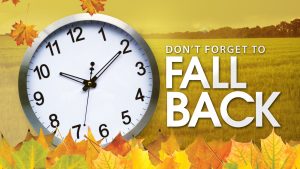Daylight savings time, also known as summertime in some countries, is when we adjust the clocks forward one hour in the start of spring and adjust them backward in the autumn to standard time. The idea was proposed by George Hudson in 1895, particularly many countries starting using this after the energy crisis of the 1970’s. Although it is a nationwide process, sometimes this clock shift complicates timekeeping and can distribute travel, billing, record keeping, medical devices and sleep patterns. Computer software adjusts clocks automatically but some other devices are not changed and timings may be confusing. Recently on November 5th 2017 the clocks shifted back an hour resulting in an earlier set time for the sunset and sunrise. It now gets dark around six p.m. and gets bright in the morning around six a.m.
Some students are opposed to the time change regarding the time of the sunset and sunrise. Student Emily Forsman says “I don’t like that it gets dark earlier because it makes me more tired and it feels like I should already be in bed when its really only 6 pm” Other students like it better this way, Jonathan Alsaka says “I like it better when it gets dark earlier because I like to go to sleep earlier and when it’s dark it’s easier.” Student Jordan McNamara says he also likes it like this, “I didn’t like how dark it was while I was driving to school in the morning, now I can see and I also feel more awake because it’s brighter.”
